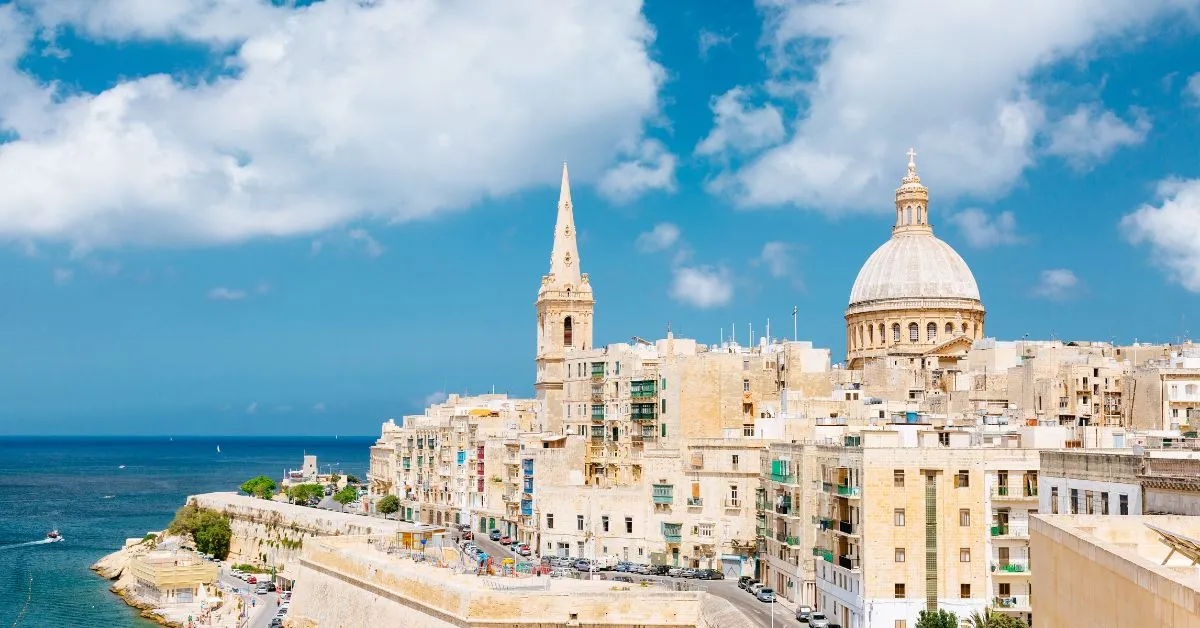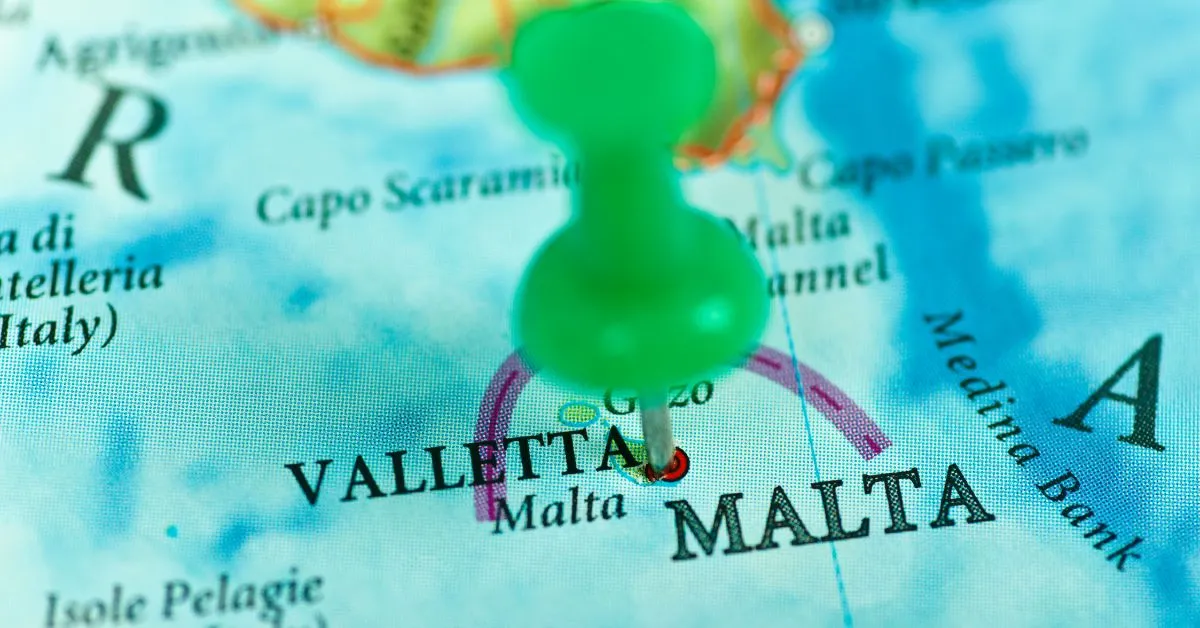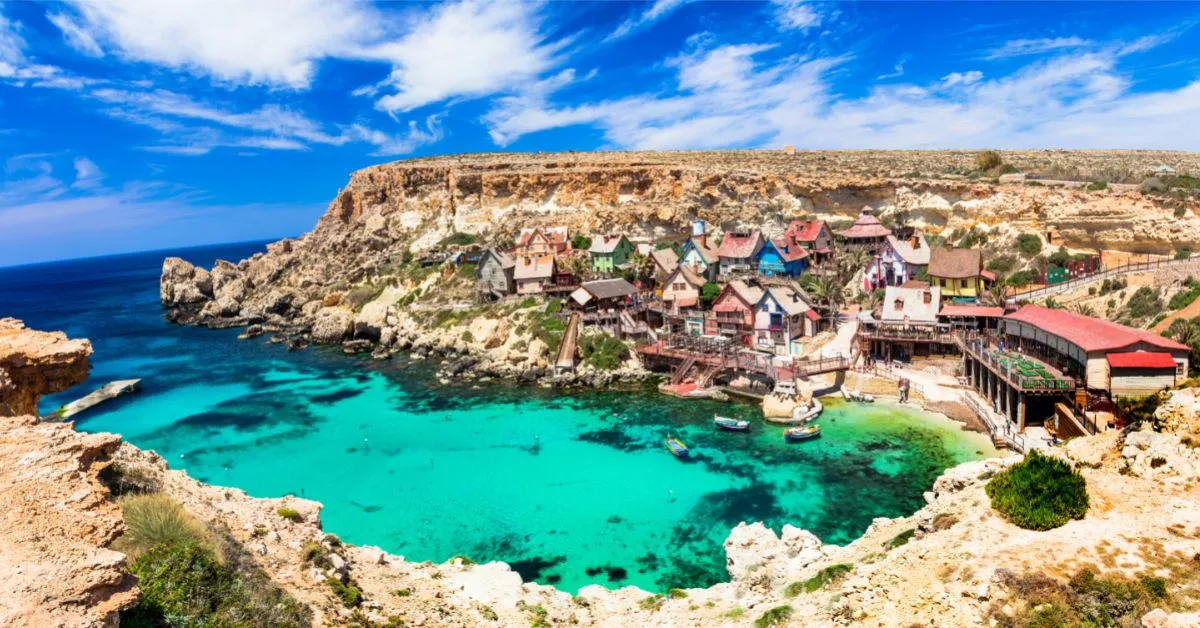Malta is an island that almost everyone knows. The place needs no introduction as it is one of the top tourist destinations filled with picturesque places and stunning beaches.
For the digital nomads, here’s some good news. Malta launched the Digital Nomad Visa in 2021, and it’s actually beneficial for those who would like to work from Malta, take time and explore what the island has to offer.
Here’s everything you need to know about Malta’s Digital Nomad Visa.
Wondering if you need a visa for Malta? Check on iVisa.
What Is The Malta Digital Nomad Visa?
The Digital Nomad Visa, otherwise known as the Malta Nomad Residence Permit, now allows people to work and live in Malta for up to one year.
So basically, if you are an entrepreneur, a freelancer, self-employed, or a remote worker, you can move to Malta and work from there.
The Digital Nomad Visa was made a reality by the Maltese government in expectation of permanent investors and expats in Malta, thus aiming to give a significant boost to the country’s GDP.
Launched in 2021, the visa allows remote workers to stay in the country for one year. You must apply before entering the country.
Don’t worry; everything is explained in detail below.
Who Is Eligible To Apply For The Malta Digital Nomad Visa
For you to apply and get a successful response for the Digital Nomad Visa that Malta offers, you will have to meet the following criteria:
- Meet the minimum earnings required for this visa, which currently stands at EUR 2,700.
- Be from a Non-EU / Non-EEA country
- Be either employed or self-employed by a company based outside of Malta
Even if you meet all of the requirements above, you are not guaranteed to receive your visa.
Malta Digital Nomad Visa Application Process
Here’s an overview of the digital nomad visa application process.
Documents
The following documents are mandatory:
Financial Proof
This proof shows that you are financially independent.
You are required to provide a bank statement to prove that you have the EUR 2,700 required to receive this visa.
Proof Of Employment / Business Ownership
In order to successfully enter the country on the Digital Nomad Visa, you must first prove your employment or self-employment.
This must show that you can complete your duties remotely.
Letter of intent
Alongside your application, you must submit a letter of intent detailing why you wish you get this visa and live in Malta.
Other Documents
- Clean criminal record
- A passport valid for at least 12 months
- 2 color passport photos
- Health Insurance
- Confirmed accommodation
How Long Can You Stay In Malta With The Digital Nomad Visa
The Digital Nomad Visa for Malta, allows you to stay in the country for up to one year.
How To Apply For The Malta Digital Nomad Visa
The application process is straightforward for the Maltese Digital Nomad Visa.
You are required to fill in the N1 application form which you can download online. Then you must send your application and your other supported document via email to the Nomad Residence Permit agency.
The processing of the visa can take 30 days to be approved once the application is complete.
The application fee is EUR 300. The fee is essential for the processing of the paperwork you have submitted. So, in case your application is rejected or results in a failure, you won’t be getting a refund.
If you want to apply again, you will have to pay EUR 300 again.
And that’s detailed and crisp info on how to get your hands on your Digital Nomad Visa. Count at least 30 days to get your visa, and then keep this in your mind and plan the rest of your trip.
This way, even if it takes a month, you can comfortably pack for Malta without any stress.
Best Places To Live In Malta For Digital Nomads
Malta is an excellent country for digital nomads. It has a lot of beautiful places where you can work and live comfortably.
Here are some of the best places in Malta for Digital Nomads.
St Julian’s & Sliema
St Julian’s and Sliema are two of the most sought-after and best cities to live in Malta for expats. The resort towns are located on the island’s east coast in the Northern Harbor district.
Both towns offer beautiful seafront scenery with stunning beaches. They are connected by a long seaside promenade which, after St Julians, continues to the next small village, Paceville.
While St Julian’s and Sliema have a nice balance of residential and commercial buildings, Paceville is known as Malta’s central bar district, boosting the best nightlife on the island.
St Julian’s and Sliema are the most urban and modernized parts of Malta, with shopping malls, movie theaters, and plenty of bars, restaurants, and clubs.
As a result, these two towns are hugely popular with expats and tourists, resulting in a large international community.
St. Paul’s Bay & Mellieha
Another of the best places to live in Malta is in the north of the island. The two seaside villages, St. Paul’s Bay and Mellieha have large international communities and offer a comfortable and relaxed lifestyle.
Expats and digital nomads flock here for the gorgeous sandy beaches and wide array of modern amenities. However, as they are quieter than the nearby resort towns of Bugibba and Qawra, they are also popular with families.
Mellieha is an incredibly picturesque village located at the top of a hill. The views here are splendid, and there is a lovely beach about half a mile down the mountain. There are also many restaurants, cafes, and bars.
Bugibba & Qawra
Just north of St. Paul’s Bay, you’ll find the small but bustling area of Bugibba and Qawra with a totally different feel to the relatively peaceful St. Paul’s Bay. Bugibba and Qawra are where you will find the best nightlife in the north of the island.
In Bugibba, most of the life is found in and around the palm-lined Bugibba Square, with many pubs, sports bars, and pizzerias.
Qawra has a broader range of entertainment options, such as a casino, cinema, bingo hall, and karaoke bars. You’ll also find more nightclubs in Qawra, giving Bugibba a slightly more relaxed feel.
These resort towns have a holiday vibe, so you’ll find more resorts than residential buildings. Thus, many expats choose to live next door in St. Paul’s Bay and travel here for the vibrant nightlife.
Still, for party-loving digital nomads staying a few months on the island, Bugibba and Qawra are undoubtedly two of the best cities in Malta.
Valletta
Valletta is Malta’s capital city and a significant European cultural hub. Although it is the capital, it is not a big bustling city.
Compared to other European capital cities, Valletta is tiny and quiet, with less than 7000 people residing here.
The entire walled city is a UNESCO World Heritage Site, which is one reason why Valletta lacks much nightlife. Still, there are plenty of cultural venues like museums, art galleries, and medieval relics like the great Fort St Elmo.
In the evening, you’ll find entertainment amongst the theaters and wine bars.
Unlike most other parts of Malta, Valletta is highly walkable. Plus, because the city sits between two harbors, it boasts breathtaking views on either side.
Valletta is a good choice for bankers and financial advisors. This is because it is the financial capital of Malta and home to the headquarters of many banks and financial institutions.
Swieqi & Pembroke
Swieqi and Pembroke are two towns just north of St Julian’s and another fab option for expats living and working in Malta.
They are particularly popular with families as many top international schools are here, and the University of Malta is nearby.
Pembroke was created in the 1990s and is Malta’s newest town. It is situated on the coast, close to lively Paceville, but Pembroke itself is quiet and residential.
Pembroke is still relatively undeveloped and rocky, but you’ll find some excellent coastal hiking paths. Therefore, the town is a good choice for outdoor lovers who enjoy peace and quiet but still want to be close to the action.
Swieqi is an inland town, so it lacks Pembroke’s oceanfront scenery. Still, it has all the necessary amenities and facilities and boasts a highly peaceful feel.
Mosta
Mosta is a small but densely populated town in the island’s center, with around 19,200 inhabitants. It is also continually developing, with new buildings always being built.
The city has a rich culture with fascinating monuments like the Mosta Rotunda, a neoclassical church with a famous dome, and the Ta’ Bistra Catacombs. There are plenty of commercial spaces too, including restaurants, bars, and shops.
Although Mosta is not situated by the coast, the city is one of the cheapest places in Malta to live. Monthly rent on a one-bedroom apartment costs between €600 and €700.
What’s more, job opportunities are plentiful, including highly skilled jobs like engineers and IT specialists and entry-level positions in sales and admin.
Cost Of Living In Malta
The cost of living in Malta is quite reasonable, especially if you compare it to other European countries.
You could find accommodation in Valletta for anything between EUR 10 – 25 on a budget or EUR 25-90 if you have more to spend, depending on your needs, apartment size, and area.
Food is reasonably priced in Malta. A meal at a mid-range restaurant cost around EUR 20 for two people.
Keep in mind that the location will influence the cost of living.
The best way to save money in Malta is by cooking your meals at home. This is especially true if you live in Valletta or any other big city. The cost of groceries is cheaper than eating out, and you’ll be able to save a lot of money this way.
Final Thoughts On Digital Nomads in Malta
Malta is a great country for digital nomads. It has a lot to offer in terms of infrastructure, food, and culture.
And, it’s much cheaper to live here than in many other European countries.
If you’re thinking of becoming a digital nomad, Malta is definitely a place you should consider.
Not sure if Malta is the right destination for you? Read one of the following guides:
Do you have your travel insurance?
- ☑ SafetyWing offers affordable travel medical insurance. Prices start at $45.08 / 4 weeks.
- ☑ Created by nomads, for nomads.
- ☑ Covers quarantine and Covid-19.
- ☑ You can pay per month, and stop at anytime.




